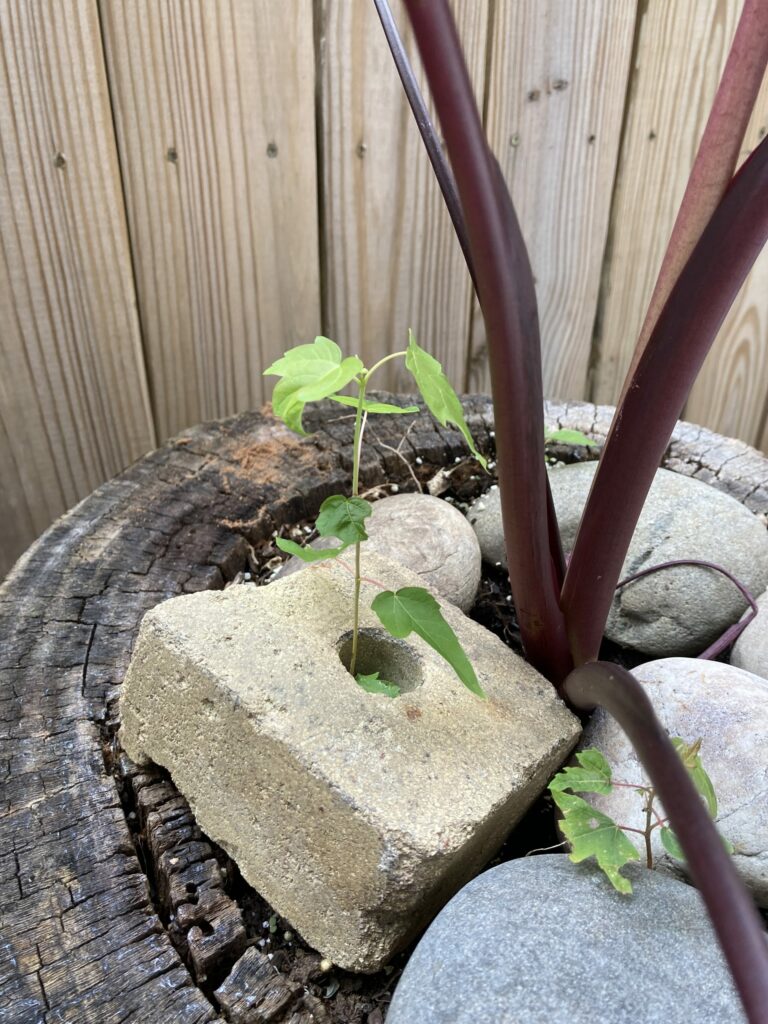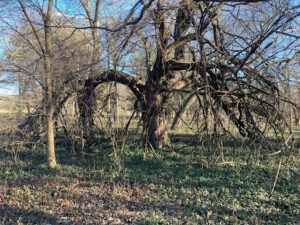By: Mark Halpin, Forestry Manager
In our area you’d be hard pressed to find someone with good things to say about the silver maple, Acer saccharinum. The native maples of our area – red, sugar, silver and boxelder – are divided firmly into “good” and “bad” sides of the family, with red and sugar maple being beloved and widely planted (probably overplanted in the case of red maple).They are the favored children of the genus – the doctors and lawyers – standing proud with their glorious fall color and relatively strong wood. Silver maple and boxelder are the prodigal children, who only seem to call when they need money. They are weedy, constantly dropping branches, their leaves a trashy yellow in the fall. Because of their prolific seed production they are seemingly everywhere, coming up along unmowed fence lines, behind garages and sheds, anywhere a tree is really not needed or wanted. Boxelder in particular is so bad people often try their hardest to forget that it’s a maple, which is easy to do as its trifoliate leaves – which strongly resemble poison ivy – do not look like its relatives much at all.
I too have spent my fair share of time cursing silver maples, but it’s important to remember that context defines everything when it comes to trees. Imagine a river meandering its way through a sunny prairie, with a grove of silver maples making their home at a bend. Or a country home, surrounded by acres of farmland, with a massive silver maple in a wide open area near the barn, an old tire swing hanging from a stout branch – aren’t these inviting sights? The silver maple’s problems really arise when it is introduced into an urban or suburban area, close to buildings and human habitation. Maybe it has something in common with deer, those wild creatures that cause a splitting headache when they start invading subdivisions but are so beautiful and noble when you see one in the woods.
In its own environment, silver maple can be a gorgeous tree. It can easily reach 80 feet in height and nearly as wide in spread within 60 or 70 years, and casts a lightly dappled shade owing to its open crown and fine leaves. The branches become pendulous as they mature, drooping at the tips which allows them to sway gently in the breeze and create a delightful rustling sound when in full leaf. The silvery-grey bark is particularly striking on sunny days in winter, when the tree acts as a beacon, second only to the sycamore for its ability to shine in such conditions. And as annoying as the “helicopters” are (they are technically known as samaras), it can be quite an experience to stand below a silver maple in the spring as they rain down all around you, gently whirring their way to the ground (just try not to think that every single one of them will be a weed to pull later in the summer).
This is a tree that belongs in wide open areas, where shade is needed quickly, in parks, or in the wild. It’s interesting how it seems so less trashy when you don’t have to worry about cleaning up after it! The variation in growth habit for silver maples can also be astounding, ranging from almost pole-straight and tall to widely spreading with multiple leaders forming low to the ground. There can be much to admire if you can get past your prejudices and admire this tree for what it is.




